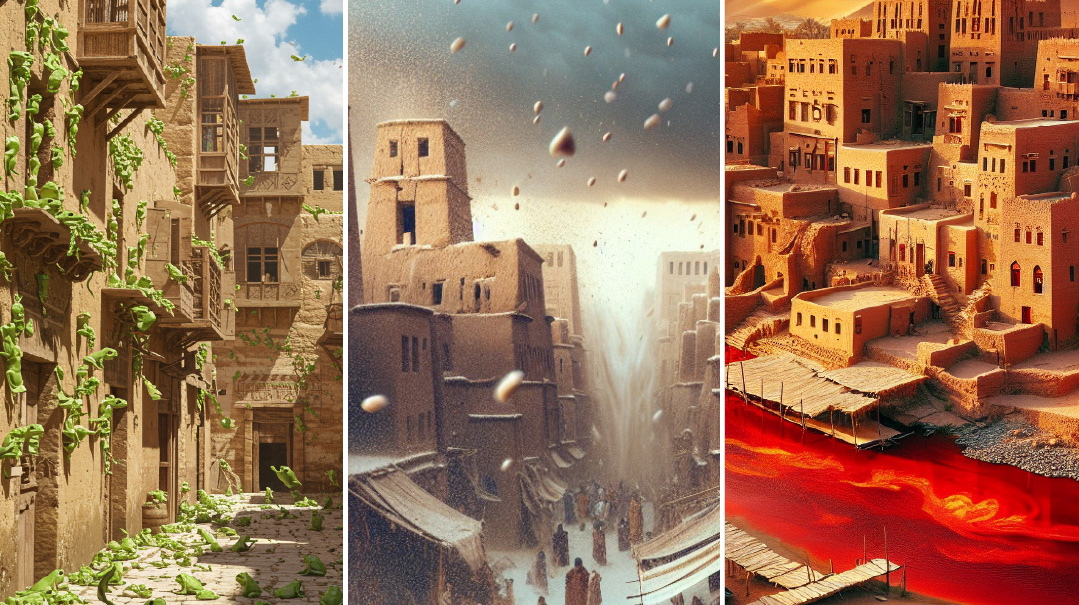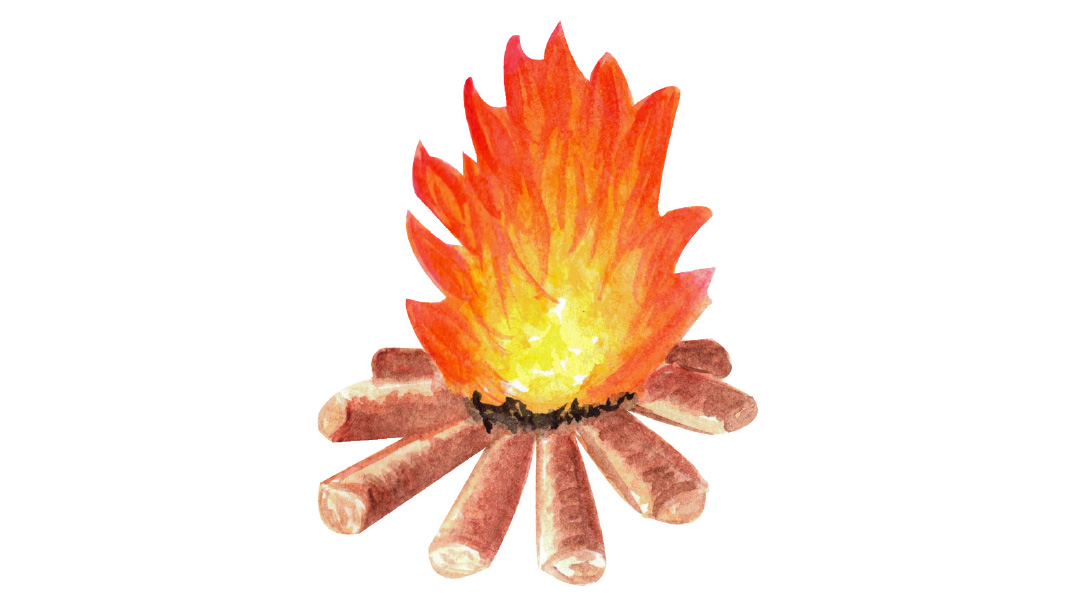The Day of the Brightest Light
| October 13, 2024The holier a specific time is, the more desperately the opposing forces will seek to attack it
INthe year 1267, Rav Moshe ben Nachman, known to posterity as the Ramban, arrived upon the shores of Eretz Yisrael. The land was largely uninhabited and much of it was left in ruin. But in a letter addressed to his son (found in Kisvei HaRamban, Iggeres 7), the Ramban provides an insight into what lies within this desolation.
“Kol hakadosh meichaveiro charav yoser meichaveiro,” writes the Ramban — anything holier than its “friend” is more desolate than its “friend.” The Ramban goes on to relate how this was clearly manifest. Yerushalayim, the holiest city of all, was the most desolate. The region of Yehudah was less so, but more than the Galil. Each locale had undergone a level of destruction that correlated with its sanctity.
The explanation for this, on a basic level, is that the holier something is, the more aggressively the forces of evil will pursue it. The desolation of a holy place is to be seen as powers of impurity imposing themselves against the powers of kedushah.
What holds true for space also holds true for time. The holier a specific time is, the more desperately the opposing forces will seek to attack it.
That is what happened one year ago. On Shemini Atzeres that fell out on Shabbos, celebrated in Eretz Yisrael as Simchas Torah, the worst attack against the Jewish People since the Holocaust occurred. Timing was not a coincidence. Looking at it through a spiritual lens reveals that it was a horrific unleashing of evil, trying to quash the immense kedushah of Shemini Atzeres. For the kedushah of Shemini Atzeres, and the spiritual opportunity it contains, is unparalleled by any other time of the year. The following are four ideas to have in mind as we return to the day on which it all began.
1
The Mishnah Berurah (669:11) writes that everyone should attempt to dance on Simchas Torah, even the elderly. One should strengthen himself to express his joy for Torah, writes the Mishnah Berurah, as we find with Dovid Hamelech— that he danced before the Aron with all his might. The Arizal said that the loftiest levels he achieved came from rejoicing with all his might in the simchah shel mitzvah, and the Vilna Gaon would also dance with all his energy on Simchas Torah. So says the Mishnah Berurah.
Let’s take a moment to ponder this directive. We cannot fathom the greatness of the Arizal. The Chida writes that the Arizal had the eifer shel Parah Adumah (the ashes of the Parah Adumah) in his possession. The Arizal once explained that he didn’t write his Torah down because the moment he began, torrents of Torah began pouring forth. And he reached the apex of his loftiness through the power of simchah shel mitzvah. When we celebrate Simchas Torah, let us bear this in mind. Through our simchah shel mitzvah, we will climb to the greatest heights we can possibly achieve.
2
Rav Chaim Palagi, in his sefer Moed L’chol Chai (25:41), writes that if one dances with the Torah with all his energy, he is assured that Torah will never cease from his descendants. He quotes the Chemdas Yamim, who said that he witnessed a great rav dancing with much fervor before the Torah. The next three generations to emanate from this rav were all wondrous talmidei chachamim and teachers of Torah. Many attributed this to his elated dancing on Simchas Torah. The father of Rav Ovadiah Yosef was nicknamed “Gali.” This was a reference to the gilah he exuded on Simchas Torah. More specifically, he would sing out, “Simchu baHashem v’gilu b’radah!” in very profound tones. The repetition of the word “v’gilu” led to him being called “Gali.” He would then travel from shul to shul to wish mazel tov to the Chassan Torah. His son, Rav Ovadiah, would go on to light up the world with his brilliance in Torah. Many have attributed the fact that his father merited such an illustrious son to the great joy with which he celebrated on Simchas Torah.
3
In the sefer Maamarei Pachad Yitzchok (Succos, maamar 57), Rav Yitzchok Hutner relates a story about the Chiddushei HaRim. There were two men dancing on Simchas Torah, one a great talmid chacham, the other less so.
The Chiddushei HaRim pointed to the more learned talmid chacham and told his talmidim — “He will tire first.” Sure enough, this was the case.
“How did the Rebbe know?!” the talmidim asked the Chiddushei HaRim.
“Because,” he responded, “the greater talmid chacham is dancing in celebration of all the Torah that he learned this year. And while that is very significant, it is still finite. The one who is less learned does not have enough to celebrate in terms of the past. He, on the other hand, is celebrating what he will learn in the future. And that potential is limitless.”
When we celebrate Simchas Torah, it isn’t merely about our accomplishments of the past. It is a celebration of our plans for the future, the aspirations to continue climbing the rungs of the ladder toward greatness in Torah. Our potential is endless — and so shall be our joy as we celebrate the end of a year’s worth of learning, and the start of another.
4
The greatest eis ratzon of the whole year comes during the hakafos on Simchas Torah. Rav Yeruchem Olshin teaches, as recorded in the sefer Yareiach L’Moadim (found in footnote 254 on page 589), that his grandmother related to him that her father said there was a tradition in the town of Dinov that one could acquire more through his tefillos on Simchas Torah than during the entire year.
Similarly, in the sefer Divrei Yatziv, the Klausenburger Rebbe is recorded as having said that he heard from zekeinim from the town of Dinov that there were more tears during the “Ana Hashem, hoshia na” of a single hakafah than there were during all the Yamim Noraim combined. These tefillos, the Klausenburger Rebbe explains, were unique in that they were tefillos shel simchah — prayer arising from a state of happiness, which has greater potency than tefillah from a sense of fear or desperation.
It is important to remember the teaching of the Zohar with regard to Shemini Atzeres, “she’al mah d’bai v’yahiv lei — one can ask he wants and [Hashem] will give it to him.”
As we enter Simchas Torah, let us bear these four themes in mind. On Simchas Torah, we can reach the highest levels of holiness, we can be granted spiritual insurance for our families, we can celebrate all our future plans and potential, and we can be rewarded with acceptance of all our tefillos.
What an incredible day!
(Originally featured in Mishpacha, Issue 1033)
Oops! We could not locate your form.







